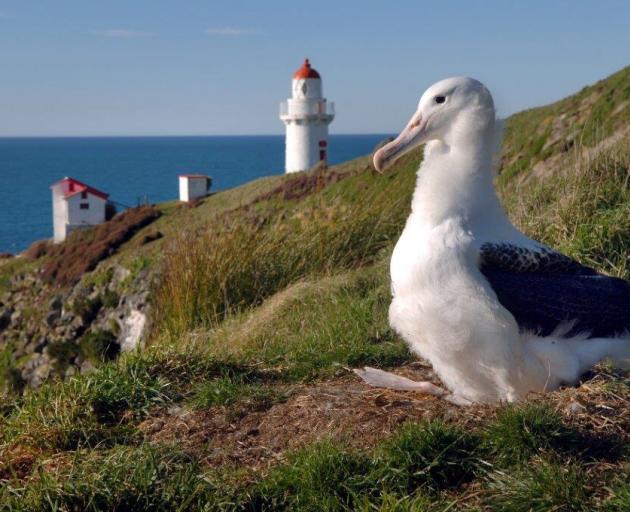
The first northern Royal Albatross chick of the 2020/21 breeding season hatched at the colony at Taiaroa Head today.
As per Dunedin tradition, a Happy Birthday flag was flying from the Dunedin City Council’s mayoral flagpole to celebrate the event.
Department of Conservation ranger Sharyn Broni said the new chick narrowly claimed the title over two others which were not far away from hatching.
‘‘This season 41 eggs were laid - the second highest to date - and while not all were viable, we are hopeful a high number will hatch successfully over the next three to four weeks,’’ she said.
Otago Peninsula Trust ecotourism manager Hoani Langsbury said it was a good time to visit the colony as there were several nests within view of the observatory.
‘‘Ecotourism contributes well over $100 million to the Dunedin economy and our famous royals are a unique attraction for Dunedin.’’
He said fans of the birds had been avidly watching the RoyalCam couple LGL and LGK, waiting for their new chick to hatch. It was expected around January 25.
‘‘Watchers have also been entertained by non-breeding albatross busy looking for partners, courting and partying,’’ he said.
Donations had previously allowed the Trust to replace the irrigation system used to cool the albatrosses on hot, dry days by upgrading the piping to endure the increasingly extreme weather conditions.
Summer heat could be a challenge for the nesting adults and young chicks as overheating and fly strike could be fatal.
Trust general manager Robyn McDonald said they were concerned about the forecast for this to be a hot summer and the effect it had on albatross chicks.
The Trust helped with care for the albatross on very hot days by providing water for the nest irrigation system.
All the water was trucked in, which cost about $40,000 each year.
One hundred-and-forty albatross have been spotted this season since September.
Breeding usually takes place on a two-year cycle, however birds whose nests fail sometimes return the following season to breed again, which was the reason for this year’s increased nest and egg numbers.











